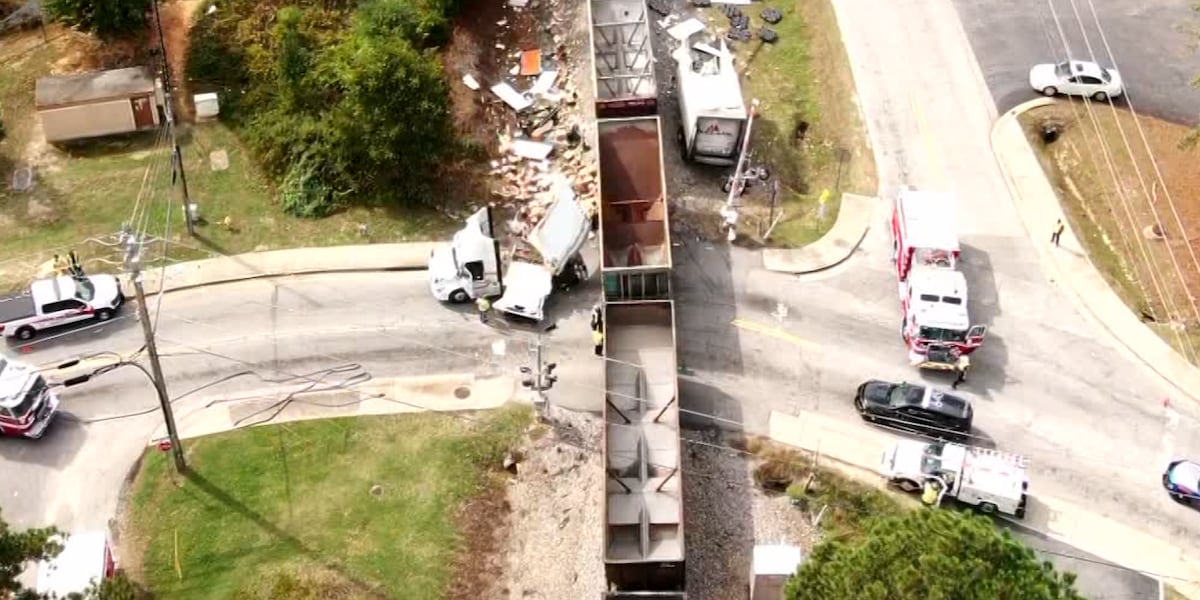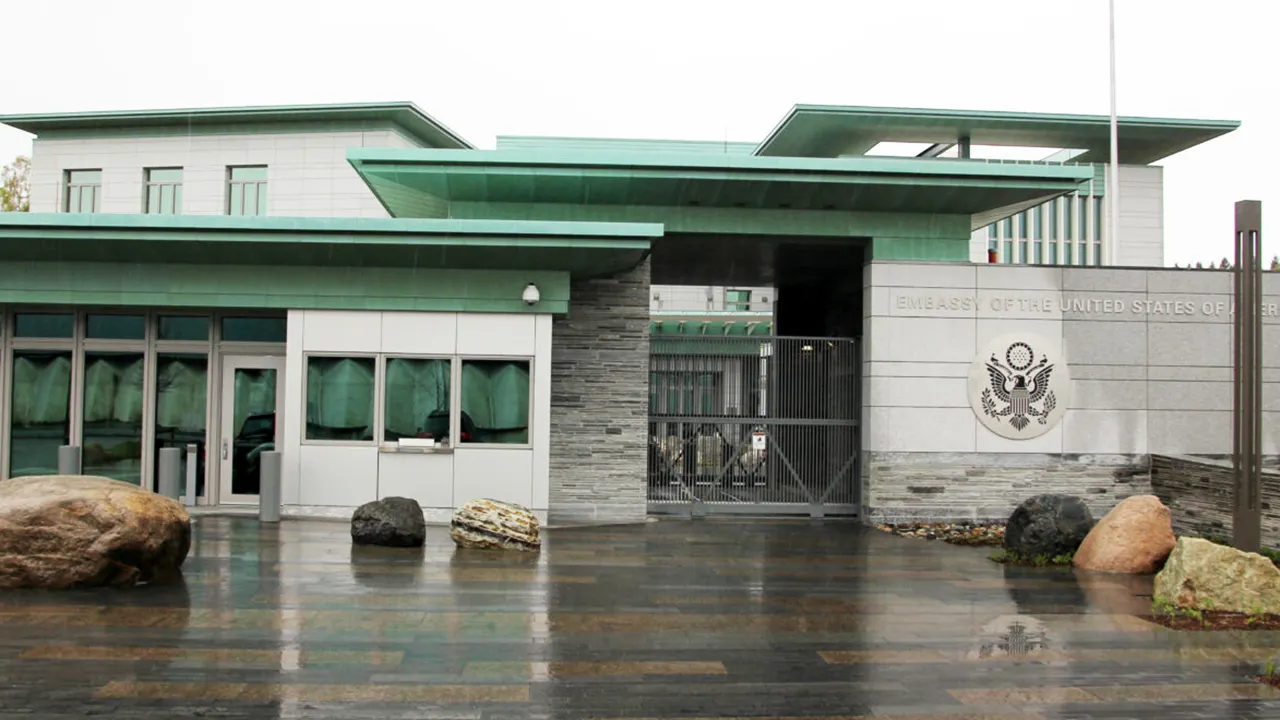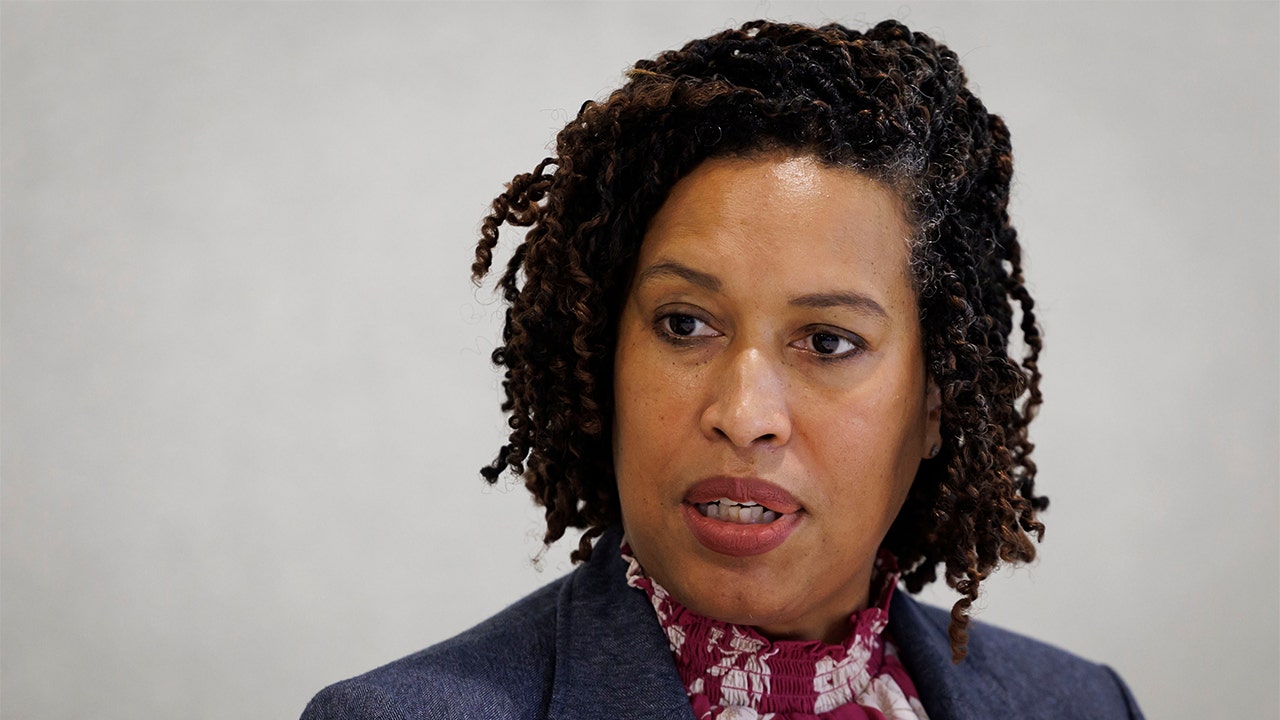Science
L.A. County gets a new tool to find and save vulnerable people with cognitive disabilities

Janet Rivera cares for both her 79-year-old mother, who has dementia, and her 25-year-old son, who has a genetic condition called Fragile X syndrome. Despite their differing diagnoses, both of her loved ones share a common symptom: They are prone to wander away from home, and have cognitive impairments that make it hard to find their way back.
When she came across L.A. Found, a county program that distributes free technology to help locate vulnerable people with cognitive disabilities, it felt like a lifeline.
The county gave her son and mother each a free wristband that emits a radio signal every few seconds. Were either of them to go missing, Rivera would call the L.A. County Sheriff’s Department, which would switch on its monitoring system and track the signal from the missing person’s device.
She feels that the trackers preserve her loved ones’ freedom and independence, while reducing her fears that they could be hurt if she couldn’t immediately find them.
“You don’t know how much this helps us with our stress as a caregiver, for our peace of mind,” she told an audience assembled Wednesday in downtown L.A.’s Gloria Molina Grand Park.
The event marked seven years of the L.A. Found program, and the addition of a new technology tool in the program’s arsenal.
Enrollees can now choose between two wearable devices: a radio transmitter wristband supported by the nonprofit Project Lifesaver, or a GPS-enabled smartwatch from technology company Theora Care that can be paired with an app on a caregiver’s phone.
Jordan Wall, who is autistic, shows off her GPS watch Oct. 15, 2025, in Gloria Molina Grand Park in Los Angeles.
(Allen J. Schaben/Los Angeles Times)
The program, which also offers in-home safety training and other resources for families, grew out of Manhattan Beach resident Kirk Moody’s efforts to locate his wife, Nancy Paulikas, who went missing Oct. 15, 2016, while the couple was visiting the Los Angeles County Museum of Art.
While Moody and family members searched the museum grounds, security cameras captured Paulikas — who had early-onset Alzheimer’s disease — walking away down Wilshire Boulevard. He received a call in December 2018 that remains discovered in a Sherman Oaks park were hers.
During his two-year search, Moody and the nonprofit Alzheimer’s Los Angeles began working with Supervisor Janice Hahn and others on an initiative that became L.A. Found.
The service is available to any L.A. County resident with a diagnosis of dementia, autism or other cognitive disability that puts them at higher risk of wandering.
More than 1,800 people have since received a tracking device through the program, and 29 have been successfully located after going missing.
“No one has to go through this anguish and hopelessness and fear,” Moody said Wednesday on the ninth anniversary of his wife’s disappearance.
Wandering is a common symptom of dementia and autism, though for different reasons.
The brain degeneration associated with Alzheimer’s disease typically starts in the entorhinal cortex, which helps track our position as we move through space, and then moves on to the hippocampus, which helps us understand where things are in relation to us.
As the disease advances, it becomes increasingly difficult for people to mentally track their own location, and recall where they intend to go or how to get back home.
Autistic people may wander away from home or a caregiver to follow something that’s captured their attention, or to escape uncomfortable sensory stimuli such as noises or bright lights.
Studies have found that up to 60% of people with dementia, and 25% to 50% of autistic people, will wander or bolt at some point. These episodes can result in injury or death. For reasons that aren’t entirely clear, autistic children in particular are often drawn to bodies of water while lost. An average of seven autistic children in the U.S. drown every month after going missing, according to the National Autism Assn.
Most challenging for families is that many at-risk people can successfully bypass complicated systems of locks and security sensors, even while lacking the verbal or cognitive abilities to seek help once they are lost.
People have slipped away while surrounded by attentive caregivers, and even when families have taken extensive measures to ensure their safety.
Kate Movius has studied wandering extensively and trains first responders on supporting autistic people. She equipped her Highland Park home with a slew of locks and security sensors to protect her autistic son. Nevertheless, by the time she acquired a Project Lifesaver wristband for Aidan, who is now 25, he had gone missing several times.
“If it can happen to me, it can happen to anyone,” Movius said. “You’re putting out so many fires as a caregiver, and [wandering] is not going to occur to you until you’re living it.”
If you or someone you know could benefit from L.A. Found’s free services, contact the program at (833) 569-7651, lafound@ad.lacounty.gov or ad.lacounty.gov/lafound.

Science
Three more L.A. County deaths tied to synthetic kratom, health department warns

Three more deaths in Los Angeles County have been linked to kratom, a compound that is being synthetically reproduced and sold over the counter as a cure-all for a host of ailments, the county Department of Public Health announced on Friday.
The compound, also known as 7-Hydroxymitragynine, or 7-OH, was found to be a contributing cause of death in three residents who were between the ages of 18 and 40, according to the county health department.
That brings the total number of recent overdose deaths related to kratom in L.A. County to six. The first three deaths were identified in September. Alcohol was also found in all six individuals.
“It’s critical that the community understand that these products are dangerous and can result in fatal overdoses,” said Gary Tsai, director of the Los Angeles County Department of Public Health’s Substance Abuse Prevention and Control Bureau. “The safest thing to do is avoid using 7-OH and kratom-related products altogether.”
In addition, Tsai said, to reverse an opioid overdose, the best approach is to administer naloxone.
Kratom is an herbal extract derived from the leaves of Mitragyna speciosa, a tree native to Southeast Asia, and is commonly sold as a powder or pill — sometimes based on its natural form, and sometimes based on a synthetic version. Recently, U.S. purveyors have been selling more and more products with potentially dangerously concentrated amounts of 7-OH, according to a July report from the Food and Drug Administration.
Researchers say there are people in the United States who use kratom to alleviate anxiety and chronic pain or as a remedy for the symptoms associated with quitting opioids. But despite its use for pain relief, public health officials have raised concerns about the potential for 7-OH abuse because of its ability to bind to opioid receptors in the body.
“Retailers should immediately stop selling any 7-OH products, as these are not lawfully marketed in the U.S. as a drug product, dietary supplement, or food additive,” L.A. County’s public health department said on Friday.
The synthetic product comes in various forms such as tablets, gummies, drink mixes, and concentrated liquid extracts or shots for drinking. When mixed with alcohol and certain drugs, 7-OH can cause severe respiratory depression, when breathing becomes too slow, which in worse-case scenarios can lead to death.
According to warning letters sent by the U.S. Food and Drug Administration to firms marketing kratom-related products, 7-OH has not been approved by the FDA and is not permitted to be marketed or sold as a drug or additive to food or drinks.
In the absence of regulation at the state level, some communities in California have taken it upon themselves to act. Orange County and the cities of Newport Beach, San Diego and Oceanside have all prohibited the sale, distribution or possession of kratom.
Science
NASA’s JPL cuts 550 jobs in latest round of layoffs at La Cañada Flintridge facility

Layoff notices went out Tuesday to 550 employees at NASA’s Jet Propulsion Laboratory in response to ongoing budgetary chaos at the legendary La Cañada Flintridge facility.
The layoffs reduced the employee headcount by more than 10% and affected teams across the institution, according to multiple sources not authorized to speak publicly.
A reorganization for remaining staffers will be announced on Wednesday.
“This week’s action, while not easy, is essential to securing JPL’s future by creating a leaner infrastructure, focusing on our core technical capabilities, maintaining fiscal discipline, and positioning us to compete in the evolving space ecosystem,” JPL Director Dave Gallagher said in a statement Monday.
The cuts were part of a reorganization that began in July, he said, and are not related to the federal government shutdown that began on Oct. 1.
JPL staffers are employed by Caltech, and none have been furloughed since the standoff between Democrats and Republicans in Congress began. But the research facility started preparing for a leaner future even before President Trump took office, and is enduring one of the most challenging stretches in its nearly 89-year history.
“The morale has been as low as anyone has seen in decades, maybe ever,” an employee spared by the layoffs said. “The uncertainty is very unsettling. … We expect more people will leave in the coming months due to continued uncertainty on the type of work that may or may not come.”
Layoffs and attrition have reduced JPL’s overall staffing by about one-third in the last two years, sources at the organization said, from roughly 6,500 to around 4,500 after this week’s reduction. JPL endured three rounds of layoffs last year alone, prompted by massive federal budget cuts for its beleaguered Mars Sample Return mission.
The Eaton fire came perilously close to the campus in January, forcing some 20% of the agency’s workforce to evacuate their homes. About 210 employees lost their homes in the fire, and dozens more were displaced for months.
Then in May, the Trump administration proposed a $6-billion cut from NASA’s $24.8-billion budget for the coming fiscal year, a 24% drop from its current allocation.
While both the House and Senate appropriations committees would largely keep the agency’s overall funding intact, their budgets reallocate money within the space agency in ways that could profoundly affect JPL’s work.
The House appropriations bill would keep NASA’s funding steady but cut about $1.3 billion from NASA’s $7.3 billion Science Mission Directorate, which funds many of the missions that JPL manages. The Senate bill, in contrast, would maintain the science program’s funding.
It’s not yet clear how the most recent layoffs will affect JPL’s work on drought, fire and climate change. No missions have yet been canceled or paused. But with no end in sight to the stalemate, JPL’s future remains in limbo.
“JPL is a national asset that has helped the United States accomplish some of the greatest feats in space and science for decades,” Rep. Judy Chu (D-Monterey Park) said. “Taken together with last year’s layoffs, this will result in an untold loss of scientific knowledge and expertise that threatens the very future of American leadership in space exploration and scientific discovery.”
Times staff writer Hayley Smith contributed to this report.
Science
The key health bills California Gov. Newsom signed this week focused on how technology is impacting kids

New laws signed by Gov. Gavin Newsom aim to make the artificial intelligence and social media landscape in California safer, especially for minors.
Senate Bill 243, sponsored by state Sen. Steve Padilla (D-Chula Vista) will require AI companies to incorporate guardrails that prevent so-called “companion” chatbots from talking to users of any age about suicide or self-harm. It also requires that all AI systems alert minors using the chatbots that they are not human every three hours. The systems also are barred from promoting any sexually explicit conduct to users who are minors.
The law, to be enacted on Jan. 1, follows several lawsuits filed against developers in which families allege their children committed suicide after being influenced by an AI chatbot companion.
In the same vein, Newsom signed Assembly Bill 316, which removes a civil legal defense that some AI developers have been using to make the case that they are not responsible for any harm caused by their products. They have argued that their AI products act autonomously — and so there is no legal case to blame the developers.
In a bill analysis meant for legislators, Assemblymember Maggy Krell (D-Sacramento) wrote that this change will force developers to vet their product better and ensure that they can be held to account if their product does cause harm to its users.
Another bill, AB 621, increases civil penalties for AI developers who knowingly create nonconsensual “deepfake” AI pornography. The maximum penalties go from $30,000 to $50,000, and from $150,000 to $250,000 in cases where the courts determine that the actions were done with malice.
The author of the bill, Assemblymember Rebecca Bauer-Kahan (D-Orinda), has pointed out how this technology has been used to harm minors. “In one recent instance,” she noted in an analysis supporting the proposed legislation, “five students were expelled from a Beverly Hills Middle School after creating and sharing AI generated nude photos of their classmates.”
Another AI bill, Sen. Scott Wiener’s (D-San Francisco) SB 53, was signed into law by Newsom in late September. It will require large AI companies to publicly disclose certain safety and security protocols and report to the state on critical safety incidents. It also creates a public AI computing cluster — CalCompute — that will provide resources to startups and researchers developing large AI systems.
Bauer-Kahan also was the author of AB 56, which will require social media companies to place a warning label on their platforms for minors starting in 2027. The warning label must tell children and teens that social media is associated with mental health issues and may not be safe.
“People across the nation — including myself — have become increasingly concerned with Big Tech’s failure to protect children who interact with its products. Today, California makes clear that we will not sit and wait for companies to decide to prioritize children’s well-being over their profits,” Atty. Gen. Rob Bonta, who sponsored the bill, said in a news release. “By adding warning labels to social media platforms, AB 56 gives California a new tool to protect our children.”
Other bills recently approved by Newsom look to challenge the Internet’s grip on young people and their mental health.
AB 1043, for example, will require app stores and device manufacturers to take age data from users in order to ensure that they are complying with age verification requirements. Many tech companies, including Google and Meta, approved of the bill, which was written by Assemblymember Buffy Wicks (D-Oakland).
AB 772 will require grade K-12 schools in the state to develop a policy by mid-2027 on handling bullying and cyberbullying that happens off campus. “After-school bullying follows the pupil back to school and into the classroom, creating a hostile environment at school,” author and Assembly Speaker Pro Tem Josh Lowenthal (D-Long Beach) wrote in a bill analysis.
Proponents at the Los Angeles County Office of Education wrote in an earlier analysis that because students these days are constantly connected to the internet, bullying does not stop when school lets out. In addition, social media and texting can broadcast instances of bullying to larger audiences than ever before, according to the analysis.
The California School Boards Assn. opposed AB 772, saying that it wasn’t appropriate for school officials to take responsibility for student actions outside of school. Newsom signed the bill last weekend and included it in a larger package of bills meant to protect children from the effects of social media.
“Emerging technology like chatbots and social media can inspire, educate, and connect — but without real guardrails, technology can also exploit, mislead and endanger our kids. We’ve seen some truly horrific and tragic examples of young people harmed by unregulated tech, and we won’t stand by while companies continue without necessary limits and accountability,” Newsom said in a news release Monday. “We can continue to lead in AI and technology, but we must do it responsibly — protecting our children every step of the way. Our children’s safety is not for sale.”
-

 Augusta, GA6 days ago
Augusta, GA6 days ago‘Boom! Blew up right there’: Train slams into semi in Grovetown
-

 Wisconsin1 week ago
Wisconsin1 week agoAppleton Public Library wins 2025 Wisconsin Library of the Year award for distinguished service
-
Business7 days ago
Los Angeles Times Media Group takes step to go public
-
Virginia1 week ago
Match 13 Preview: #8 Virginia
-

 Vermont1 week ago
Vermont1 week agoFeds: Springfield dealer ran his drug business from Vermont jail
-

 News6 days ago
News6 days agoWhat we know about the charges against New York’s Attorney General Letitia James
-

 West Virginia1 week ago
West Virginia1 week agoWest Virginia eatery among Yelp’s “outrageous outdoor dining spots”
-

 Alaska2 days ago
Alaska2 days agoMore than 1,400 seeking shelter as hundreds wait to be evacuated after catastrophic Western Alaska storm, officials say















